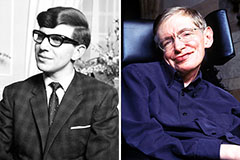Catecholamines are a category of neurotransmitters which include dopamine, norepinephrine (noradrenaline), and epinephrine (adrenaline). They Perform essential roles in your body’s reaction to anxiety, regulation of temper, cardiovascular function, and a number of other physiological procedures. The biosynthesis and catabolism (breakdown) of catecholamines are tightly regulated processes.
### Biosynthesis of Catecholamines
1. Tyrosine Hydroxylation:
- Enzyme: Tyrosine hydroxylase
- Substrate: L-tyrosine
- Item: L-DOPA (3,four-dihydroxyphenylalanine)
- Area: Cytoplasm of catecholaminergic neurons
- Cofactors: Tetrahydrobiopterin (BH4), O2, and Fe2+
- Regulation: This can be the rate-limiting phase in catecholamine synthesis and is particularly regulated by comments inhibition from dopamine and norepinephrine.
two. DOPA Decarboxylation:
- Enzyme: Aromatic L-amino acid decarboxylase (AAAD or DOPA decarboxylase)
- Substrate: L-DOPA
- Products: Dopamine
- Place: Cytoplasm of catecholaminergic neurons
- Cofactors: Pyridoxal phosphate (Vitamin B6)
3. Dopamine Hydroxylation:
- Enzyme: Dopamine β-hydroxylase
- Substrate: Dopamine
- Item: Norepinephrine
- Place: Synaptic vesicles in noradrenergic neurons
- Cofactors: Ascorbate (Vitamin C), O2, and Cu2+
four. Norepinephrine Methylation:
- Enzyme: Phenylethanolamine N-methyltransferase (PNMT)
- Substrate: Norepinephrine
- Products: Epinephrine
- Locale: Cytoplasm of adrenal medulla cells
- Cofactors: S-adenosylmethionine (SAM)
### Catabolism of Catecholamines
Catecholamine catabolism will involve quite a few enzymes and pathways, principally leading to the formation of inactive metabolites which might be excreted while in the urine.
1. Catechol-O-Methyltransferase (COMT):
- Motion: Transfers a methyl group from SAM towards the catecholamine, causing the formation of methoxy derivatives.
- Substrates: Dopamine, norepinephrine, and epinephrine
- Goods: Methoxytyramine (from dopamine), normetanephrine (from norepinephrine), and metanephrine (from epinephrine)
- Locale: Equally cytoplasmic and membrane-bound varieties; extensively dispersed such as the liver, kidney, and brain.
two. Monoamine Oxidase (MAO):
- Motion: Oxidative deamination, resulting in the formation of aldehydes, which can be further metabolized to acids.
- Substrates: Dopamine, norepinephrine, and epinephrine
- Solutions: Dihydroxyphenylacetic acid (DOPAC) from dopamine, vanillylmandelic acid (VMA) from norepinephrine and epinephrine
- Place: Outer mitochondrial membrane; commonly dispersed within the liver, kidney, and brain
- Styles:
- MAO-A: Preferentially deaminates norepinephrine and serotonin
- MAO-B: Preferentially deaminates phenylethylamine and specific trace amines
### In-depth Pathways of Catabolism
one. Dopamine Catabolism:
- Dopamine → (by way of MAO-B) → DOPAC → (by means of COMT) → Homovanillic acid (HVA)
two. Norepinephrine Catabolism:
- Norepinephrine → (via MAO-A) → three,four-Dihydroxyphenylglycol (DHPG) → (via COMT) → Vanillylmandelic acid (VMA)
- Alternatively: Norepinephrine → (by way of COMT) → Normetanephrine → (through MAO-A) → VMA
3. Epinephrine Catabolism:
- Epinephrine → (through MAO-A) → 3,4-Dihydroxyphenylglycol (DHPG) → (by way of COMT) → VMA
- Alternatively: Epinephrine → (through COMT) → Metanephrine → (by means of MAO-A) → VMA
### Summary
- Biosynthesis starts While using the amino acid tyrosine and progresses through several enzymatic measures, leading to the development of dopamine, norepinephrine, and epinephrine.
- Catabolism involves enzymes like COMT and MAO that stop working catecholamines into several metabolites, which might be then excreted.
The regulation of those pathways ensures that catecholamine ranges are suitable for physiological desires, responding to strain, and retaining homeostasis.Catecholamines are a class of neurotransmitters that come with dopamine, norepinephrine (noradrenaline), and epinephrine (adrenaline). They Participate in important roles in the body’s reaction to pressure, regulation of mood, cardiovascular purpose, and many other physiological procedures. The biosynthesis and catabolism (breakdown) of catecholamines are tightly regulated processes.
### Biosynthesis of Catecholamines
one. Tyrosine Hydroxylation:
- Enzyme: Tyrosine hydroxylase
- Substrate: L-tyrosine
- Solution: L-DOPA (three,4-dihydroxyphenylalanine)
- Site: Cytoplasm of catecholaminergic neurons
- Cofactors: Tetrahydrobiopterin (BH4), O2, and Fe2+
- Regulation: This is the amount-restricting phase in catecholamine synthesis and is regulated by responses inhibition from dopamine and norepinephrine.
2. DOPA Decarboxylation:
- Enzyme: Aromatic L-amino acid decarboxylase (AAAD or DOPA decarboxylase)
- Substrate: L-DOPA
- Merchandise: Dopamine
- Location: Cytoplasm of catecholaminergic neurons
- Cofactors: Pyridoxal phosphate (Vitamin B6)
3. Dopamine Hydroxylation:
- Enzyme: Dopamine β-hydroxylase
- Substrate: Dopamine
- Product or service: Norepinephrine
- Location: Synaptic vesicles in noradrenergic neurons
- Cofactors: Ascorbate (Vitamin C), O2, and Cu2+
4. Norepinephrine Methylation:
- Enzyme: Phenylethanolamine N-methyltransferase (PNMT)
- Substrate: Norepinephrine
- Merchandise: Epinephrine
- Place: Cytoplasm of adrenal medulla cells
- Cofactors: S-adenosylmethionine (SAM)
### Catabolism of Catecholamines
Catecholamine catabolism includes quite a few enzymes and pathways, mostly leading to the formation of inactive metabolites that happen to be excreted in the urine.
one. Catechol-O-Methyltransferase (COMT):
- Motion: Transfers a methyl team from SAM into the catecholamine, causing the development of methoxy derivatives.
- Substrates: Dopamine, norepinephrine, and epinephrine
- Products: Methoxytyramine (from dopamine), normetanephrine (from norepinephrine), and metanephrine (from epinephrine)
- Place: The two cytoplasmic and membrane-bound forms; widely dispersed such as the liver, kidney, and brain.
2. Monoamine Oxidase (MAO):
- Motion: get more info Oxidative deamination, leading to the formation of aldehydes, which can be even more metabolized to acids.
click here - Substrates: Dopamine, norepinephrine, and epinephrine
- Items: Dihydroxyphenylacetic acid (DOPAC) from dopamine, vanillylmandelic acid (VMA) from norepinephrine and epinephrine
- Area: Outer mitochondrial membrane; extensively dispersed during the liver, kidney, and brain
- Kinds:
- MAO-A: Preferentially deaminates norepinephrine and serotonin
- MAO-B: Preferentially deaminates phenylethylamine and certain trace amines
### In-depth Pathways of Catabolism
one. Dopamine Catabolism:
- Dopamine → (by way of MAO-B) → DOPAC → (via COMT) → Homovanillic acid (HVA)
two. Norepinephrine Catabolism:
- Norepinephrine → (via MAO-A) → three,four-Dihydroxyphenylglycol (DHPG) → (through COMT) → Vanillylmandelic acid (VMA)
- Alternatively: Norepinephrine → (by way of COMT) → Normetanephrine → (by using MAO-A) → VMA
3. Epinephrine Catabolism:
- Epinephrine → (by means of MAO-A) → 3,4-Dihydroxyphenylglycol (DHPG) → (by using COMT) → VMA
- Alternatively: Epinephrine → (by way of COMT) → Metanephrine → (by using MAO-A) → VMA
Summary
- Biosynthesis begins Along with the amino acid tyrosine and progresses by means of quite a few enzymatic measures, bringing about the development of dopamine, norepinephrine, and epinephrine.
- Catabolism requires enzymes like COMT and MAO that stop working catecholamines into many metabolites, which can be then excreted.
The regulation of those pathways makes certain that catecholamine ranges are appropriate for physiological demands, responding to worry, and sustaining homeostasis.
 Luke Perry Then & Now!
Luke Perry Then & Now! Spencer Elden Then & Now!
Spencer Elden Then & Now! Dylan and Cole Sprouse Then & Now!
Dylan and Cole Sprouse Then & Now! Soleil Moon Frye Then & Now!
Soleil Moon Frye Then & Now! Stephen Hawking Then & Now!
Stephen Hawking Then & Now!